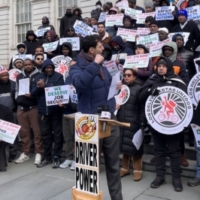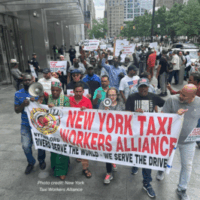Last summer, the United States took a crucial step towards protecting millions of workers across the country from the impacts of extreme heat on the job. In July 2024, the Occupational Safety and Health Administration, or OSHA, published its first-ever draft rule to prevent heat illness in the U.S. workforce. Among other things, the proposed regulation would require employers to provide access to water, shade, and paid breaks during heat waves — which are becoming increasingly common due to human-caused climate change. A senior White House official at the time called the provisions “common sense.”
Before the Biden administration could finalize the rule, Donald Trump was reelected president, ushering in another era of deregulation. Earlier this month, the Trump administration announced plans to revise or repeal 63 workplace regulations that Labor Secretary Lori Chavez-DeRemer said “stifle growth and limit opportunity.”
OSHA’s heat stress rule wasn’t among them. And though the new administration has the power to withdraw the draft regulation, it hasn’t. Instead, OSHA has continued to move it forward: The agency is currently in the middle of soliciting input from the general public about the proposed policy. Some labor experts say this process, typically bureaucratic and onerous even in the absence of political interference, is moving along faster than expected — perhaps a sign that civil servants at OSHA feel a true sense of urgency to protect vulnerable workers from heat stress as yearly temperatures set record after record.
But labor advocacy groups focused on workers along the food supply chain — many of whom work outside, like farmworkers, or in poorly ventilated spaces, like warehouse and meat processing facilities — say workers have waited too long for basic live-saving protections. Earlier this month, Senator Alex Padilla and Congresswoman Judy Chu, both from California, reintroduced a bill to Congress that, if passed, would direct OSHA to enact a federal heat standard for workers swiftly.
. . . .
In late June and early July, OSHA held virtual hearings in which it heard testimony from people both for and against a federal heat standard. According to Anastasia Christman, a senior policy analyst from the National Employment Law Project who attended the hearings, employees from the agency seemed engaged and asked substantive questions. “It was very informative,” she said. OSHA didn’t respond to Grist’s request for comment.
As written, OSHA’s proposed heat rule would apply to about 36 million workers in the U.S. Christman noted that sedentary workers — those who sit for most of the work day — are currently excluded from the federal standard. Ironically, at one point during the agency’s hearings, participants had to take an unscheduled break after the air conditioning stopped working in the Department of Labor building where OSHA staff were sitting. “They had to be evacuated because it was too hot to sit there and be on a Zoom call,” said Christman. She estimated that if sedentary workers were non-exempt, the number of U.S. workers covered by the rule would nearly double to 66 million.
From her point of view, OSHA is moving “very fast on this — for OSHA.” But Christman acknowledged that, even in a best-case scenario, regulations would not be on the books for another 12 to 14 months. At that point, OSHA would publish guidance for employers on how to comply with the regulation, as well as respond to any legal challenges to the final rule. That process, “in an optimistic world,” she said, could take between two and four years.
. . . .
Read the full story at grist.org.


